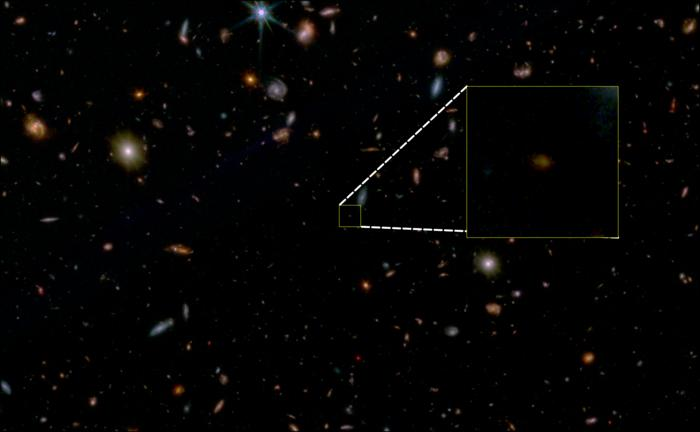The remains of the origin of the world.
“Galactic archaeologists”, these scientists who seek to trace the first moments of our Universe, have revealed the existence of a stellar cluster dating back to the first ages of the Universe.
The very existence of these star fossils was excluded by the big theories in force until now, explain the scientists, in a study published on January 5, 2022 in the scientific journal Nature.
To make this discovery, the researchers observed a singular group of stars on the outskirts of the Milky Way.
The conclusions of their work could give some additional keys to understanding the origin of the Universe.
Look very far or search very close
"To do galactic archeology, you have to understand what our galaxy has absorbed over time, know its foundations", explains Nicolas Martin, Astrophysicist at the Strasbourg Astronomical Observatory and main author of the study.
For this, it is possible to look very far in space and therefore in time, as the Hubble Space Telescope does and will soon do by James Webb.
The light emitted by objects at the edge of the Universe reaches us millions of years late, the distance is so great.
Read alsoJames Webb Space Telescope: why it's the mission of the year
Scientists can also look for the equivalent of "fossils" closer to us.
Remnants of past phenomena, such as the twenty stars identified by the international team led by Nicolas Martin.
“They are among the very first to have formed in the Universe” “more than 12 billion years ago, maybe even more than 13”, that is to say a few hundred million years after the Big- bang.
A shred of stars
These vestiges extend in the form of a “current” (baptized C19), a fragment of stars resulting from a stellar cluster “which passed too close to our galaxy and which it tore”.
This flap spans thousands of light years, in the form of an appendage to the Milky Way's disk.
Astronomers have spotted these stars by their very low metallicity - a measure of the proportion of chemical elements heavier than hydrogen and helium in stars.
According to the theory of star formation, the first stars were fueled only by hydrogen and helium.
VIDEO.
Discovery: our galaxy belongs to a huge ocean
“As successive generations of stars form, they create heavier chemical elements in their hearts,” explains the scientist.
When the star dies, these elements enrich the star gas, which will see the birth of other stars, enriched in turn with heavy elements.
Confront theory with observations
Our sun, a young 4.6 billion years old, is a good example.
It contains a little more than 1.5% of these heavy elements, mainly carbon, oxygen and iron.
The group of stars found by Nicolas Martin and his colleagues contains proportionally 2,500 times less…
Read alsoHow science has unraveled the mystery ... of shooting stars
However, "current models of star formation do not seem to work at such low metallicities" for the creation of stellar clusters such as the one discovered by the team of scientists.
In other words, theory must now catch up with observation.
To date, only one other star cluster, with a metallicity much stronger than C19 but below the theoretical threshold, has been discovered in the Andromeda galaxy.
Other observations to confirm
To identify C19, astronomers searched data from the Gaia satellite, which has so far mapped more than 1.5 billion stars in the galaxy. They then combined the star currents identified with a program, Pristine, which uses the Canada-France-Hawaii telescope to measure the metallicity of stars. The large Gemini North telescopes in Hawaii, and the GTC in the Canaries provided some back-up images.
The team will now follow two leads, looking at other stellar currents already identified and refining the chemical analysis measurements of C19.
With in sight the commissioning of the future European Extremely Large Telescope (ELT) (within five years).
If the stars of C19 do not belong to the very first generation to appear in the Universe, they could "have been formed from gas contaminated by the very first".








